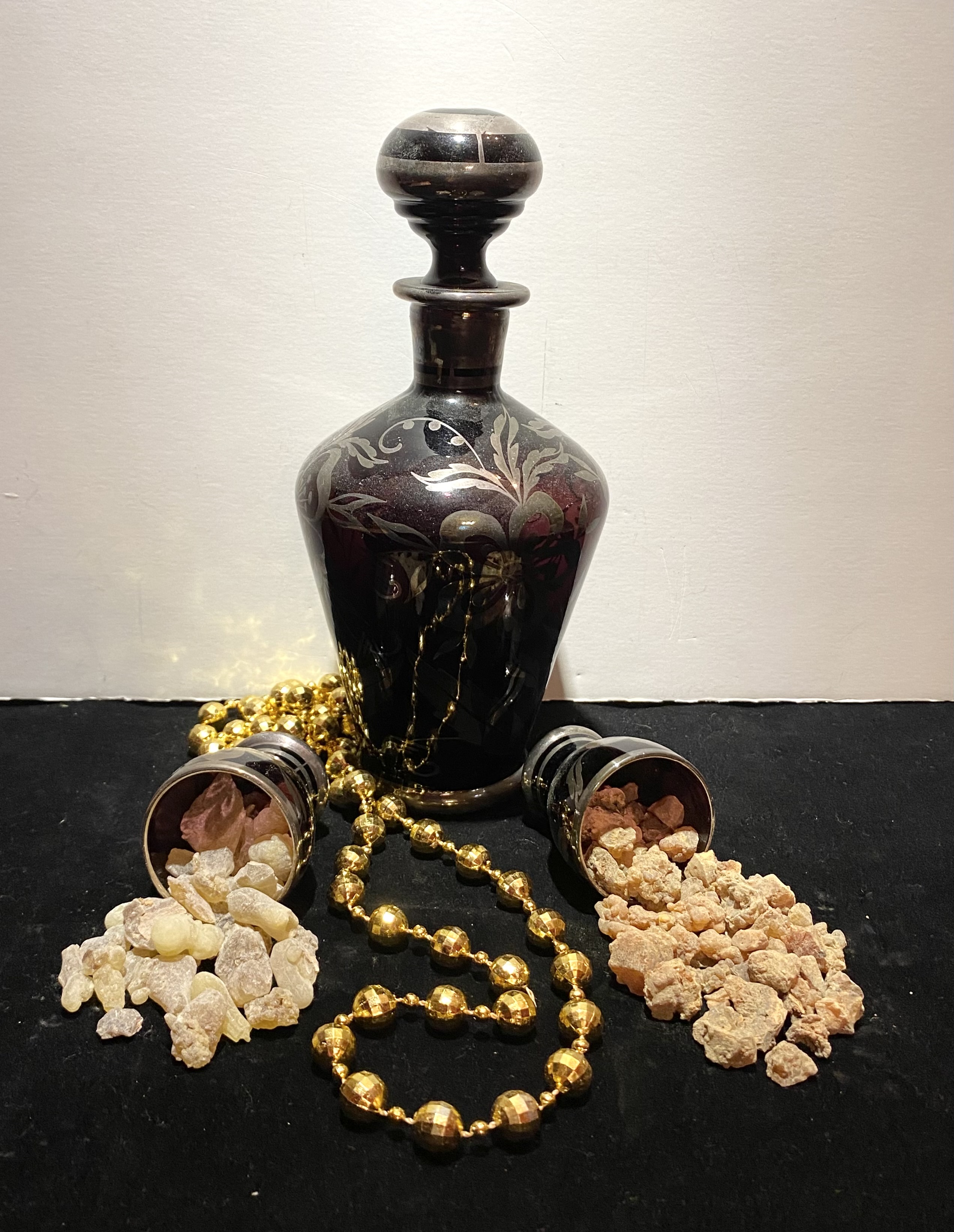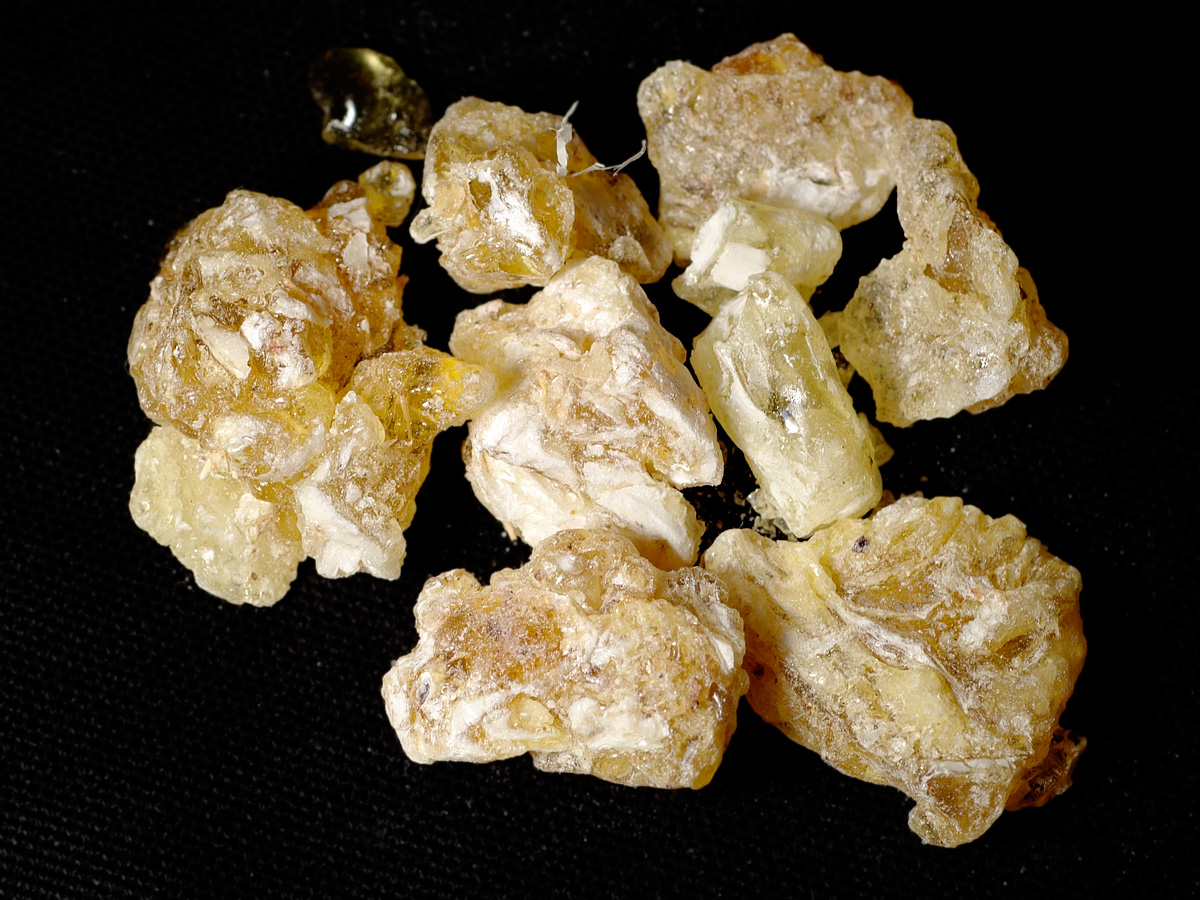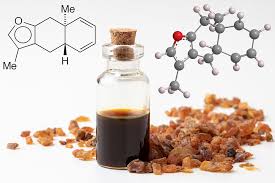Frankincense and myrrh are two of the most iconic and enduring natural substances in the history of medicine. Known for their rich aromas and powerful therapeutic properties, they played a crucial role in the healing systems of ancient Mediterranean civilizations — from the Egyptians and Greeks to the Romans and beyond. In this article, we’ll explore the use of frankincense and myrrh in ancient Mediterranean medicine, how they were harvested, applied, and valued, and what modern science says about their medicinal potential today.
Introduction to Frankincense and Myrrh
Frankincense and myrrh are aromatic resins derived from the sap of specific tree species native to the Arabian Peninsula, the Horn of Africa, and parts of India. These natural substances have been used for over 5,000 years, not just as perfumes or incense, but as key components in traditional medicine, religious rituals, and embalming practices.
What is Frankincense?
Frankincense, also known as olibanum, is obtained from the Boswellia tree, particularly Boswellia sacra and Boswellia serrata. The resin is collected by making incisions in the bark and allowing the sap to harden into globules, which are then harvested by hand. The resin is light-colored, ranging from golden yellow to pale green, and has a woody, spicy aroma.
Frankincense was prized for its anti-inflammatory, antiseptic, and astringent properties. It was used in both ritualistic contexts and therapeutic applications, including wound healing, respiratory support, and spiritual cleansing.
What is Myrrh?
Myrrh comes from the Commiphora tree, primarily Commiphora myrrha, and is harvested in a similar way. The resin is darker and more bitter than frankincense, with a reddish-brown hue and a warm, earthy scent. Myrrh was considered a powerful analgesic, antibacterial, and digestive aid in ancient medicine.
Both resins were commonly used in oil infusions, tinctures, incense, balms, and pastes, and often appeared in combined formulations for enhanced efficacy.
Why Were They So Valuable?
Frankincense and myrrh were among the most sought-after trade commodities in the ancient world. In fact, their value was sometimes greater than gold, especially in regions like Egypt and Rome, where they had to be imported over long distances.
“Frankincense and myrrh were once worth their weight in gold because of their medicinal and ritualistic importance.” — Pliny the Elder, Natural History
These resins were not only used to treat a variety of physical ailments but were also considered essential spiritual tools. They played a critical role in religious ceremonies, funerals, and temple offerings.
Key Differences Between Frankincense and Myrrh
| Feature | Frankincense | Myrrh |
|---|---|---|
| Botanical Source | Boswellia sacra, Boswellia serrata | Commiphora myrrha |
| Color and Texture | Light yellow to green, brittle resin | Reddish-brown, sticky when fresh |
| Aroma | Woody, citrusy, spicy | Earthy, warm, slightly bitter |
| Primary Use in Medicine | Anti-inflammatory, respiratory, antiseptic | Analgesic, digestive aid, wound healing |
| Spiritual Use | Incense, purification, temple offerings | Embalming, funerals, anointing |
Fun Fact:
- The Three Wise Men brought frankincense and myrrh to the baby Jesus not as exotic gifts, but as medicinal and spiritual tools. This underscores how deeply valued these resins were in first-century medicine and spirituality.
FAQs (Answer Engine Optimization)
What are frankincense and myrrh made from?
Frankincense and myrrh are resins harvested from the Boswellia and Commiphora trees, respectively. The resins are collected by cutting the bark and gathering the dried sap.
Are frankincense and myrrh the same thing?
No. While both are resins and used similarly in ancient medicine, they come from different trees and have different chemical properties, aromas, and therapeutic effects.
Why were frankincense and myrrh important in ancient medicine?
They were used to treat infections, inflammation, respiratory issues, and wounds, and also had spiritual uses in rituals and purification.
High Authority External Link:
- Frankincense (Heaven’s Gift) — Chemistry, Biology, and Clinical Applications (IntechOpen) — this is an open‑access chapter by Farid A. Badria, which covers historical background, folkloric uses, chemical composition, and modern clinical applications of frankincense. IntechOpen
- Insights into frankincense and myrrh research: A comprehensive analytical study of patterns and perspectives (Heliyon, via ScienceDirect/PubMed) — offers a bibliometric analysis of modern studies on frankincense and myrrh, helping show how their ancient use connects to current research. ScienceDirect+1
High Authority External Link:
- “A Review of Anti‑inflammatory Terpenoids from the Incense Gum Resins Frankincense and Myrrh” (Journal of Oleo Science) — this free‑access review examines various terpenoid constituents in frankincense and myrrh, their ability to inhibit inflammatory mediators like nitric oxide, and provides deeper insight into how these resins deliver medicinal effects. PubMed+1
Historical Importance in the Ancient Mediterranean World
The ancient Mediterranean world was a hub of cultural exchange, where trade routes connected diverse civilizations. Among the most valuable commodities traded were frankincense and myrrh, resins that not only held economic significance but also played pivotal roles in medicine, religion, and daily life.
Ancient Egypt: The Heart of Medicinal Innovation
In ancient Egypt, frankincense and myrrh were integral to both medical practices and spiritual rituals.
- Embalming and Mummification: The Egyptians utilized these resins in the embalming process to preserve bodies for the afterlife. The Ebers Papyrus, a medical text dating back to around 1550 BCE, documents the use of myrrh for treating wounds and sores, as well as its role in mummification.
- Wound Care: Myrrh’s antiseptic properties made it a valuable agent for treating injuries. It was often applied topically to wounds to prevent infection and promote healing.
- Respiratory Ailments: Frankincense was burned to produce aromatic smoke, believed to purify the air and alleviate respiratory issues. It was also used in treatments for asthma and coughs.
- Oral Hygiene: Both resins were components in dental care formulations, helping to maintain oral hygiene and treat gum diseases.
Ancient Greece and Rome: The Legacy of Hippocrates and Dioscorides
Greek and Roman physicians expanded upon Egyptian knowledge, incorporating frankincense and myrrh into their medical repertoires.
- Hippocrates, often regarded as the “Father of Medicine,” documented the medicinal uses of myrrh, emphasizing its efficacy in treating digestive disorders and infections.
- Dioscorides, a Greek physician and pharmacologist, wrote extensively about the medicinal properties of plants, including frankincense and myrrh. His work, De Materia Medica, served as a cornerstone of herbal medicine for centuries.
- Roman Practices: The Romans used these resins in various preparations, such as ointments and salves, to treat a range of conditions from skin ailments to digestive issues.
Trade and Economic Significance
The trade of frankincense and myrrh was a significant economic activity in the ancient Mediterranean.
- Incense Routes: The Incense Route, a network of trade routes connecting the Mediterranean to the Arabian Peninsula, facilitated the movement of these valuable resins.
- Cultural Exchange: The trade not only involved the exchange of goods but also the sharing of knowledge and cultural practices, leading to a rich tapestry of medicinal and spiritual traditions.
Medicinal Properties and Applications
Frankincense and myrrh were not merely aromatic resins; they were integral to the medical practices of ancient Mediterranean civilizations. Their therapeutic properties were recognized and utilized in various treatments, from wound care to digestive issues.
Anti-Inflammatory Effects
Both frankincense and myrrh contain compounds known to possess anti-inflammatory properties.
- Frankincense: The resin of the Boswellia tree contains boswellic acids, which have been shown to inhibit the production of pro-inflammatory enzymes. This made it valuable in treating conditions like arthritis and other inflammatory disorders.
- Myrrh: Similarly, myrrh contains compounds that reduce inflammation. Its use in treating inflammatory conditions was well-documented in ancient texts.
Antimicrobial and Antiseptic Properties
The antimicrobial properties of these resins made them effective in treating infections and wounds.
- Frankincense: Studies have indicated that frankincense oil possesses antibacterial and antifungal properties, aiding in the prevention and treatment of infections.
- Myrrh: Myrrh’s antimicrobial effects were utilized in ancient Egypt for embalming, as it helped prevent decomposition by inhibiting bacterial growth.
Digestive Health
Both resins were used to address digestive issues.
- Frankincense: It was used to treat gastrointestinal disorders, including indigestion and bloating.
- Myrrh: Known for its carminative properties, myrrh was employed to relieve symptoms of indigestion and to promote healthy digestion.
Pain Relief and Analgesic Effects
The analgesic properties of frankincense and myrrh provided relief from various pains.
- Frankincense: Its use in treating pain, particularly in conditions like arthritis, was prevalent in ancient medical practices.
- Myrrh: Myrrh was applied to alleviate pain and inflammation, especially in dental and oral health treatments.
Modern Scientific Validation
Modern research has begun to validate the ancient uses of these resins.
- Frankincense: Contemporary studies have highlighted its potential in treating chronic inflammatory diseases and its role in cancer therapy.
- Myrrh: Research has supported its use in treating infections, inflammation, and its potential anticancer properties.




Certainly! Let’s proceed with the fifth section of your blog post:
Cultural and Religious Significance
Beyond their medicinal applications, frankincense and myrrh held profound cultural and religious importance in the ancient Mediterranean world. Their roles transcended mere utility, embedding them deeply into the spiritual and ceremonial practices of various civilizations.
Ancient Egypt: Sacred Offerings and Rituals
In ancient Egypt, both resins were integral to religious ceremonies and daily rituals:
- Temple Incense: Frankincense was burned in temples to purify the air and create an atmosphere conducive to worship. Its smoke was believed to carry prayers to the gods.
- Embalming Practices: Myrrh’s preservative properties made it essential in the embalming process, ensuring the deceased’s body was preserved for the afterlife.
- Anointing Oils: Both resins were components in sacred anointing oils used to consecrate priests and pharaohs, symbolizing their divine appointment.
Ancient Israel: Spiritual Offerings
In ancient Israel, the significance of these resins is highlighted in religious texts:
- Biblical References: Frankincense and myrrh are mentioned in the Bible as offerings to God. For instance, in the Book of Exodus, a special incense blend containing frankincense was used in the Tabernacle.
- Gifts to the Messiah: The Magi’s gifts of gold, frankincense, and myrrh to the infant Jesus underscore their value and sacred connotations.
Ancient Greece and Rome: Ritualistic Uses
Greek and Roman cultures also revered these resins:
- Religious Ceremonies: Incense made from frankincense was burned during sacrifices and festivals to honor the gods.
- Funerary Practices: Myrrh was used in funerary rites, both as a preservative and as a symbol of respect for the deceased.
Trade and Symbolism
The trade of these resins facilitated cultural exchange and symbolized wealth and prestige:
- Silk Road and Incense Routes: The movement of frankincense and myrrh along these routes not only spread their use but also their symbolic meanings across continents.
- Symbol of Divinity: The gifting of these resins, especially in religious contexts, often symbolized the divine nature of the recipient or the sanctity of the occasion.
Modern Scientific Research and Applications
While frankincense and myrrh have been integral to ancient Mediterranean medicine, modern scientific research has begun to validate and expand upon their traditional uses. Contemporary studies have explored their pharmacological properties, leading to a resurgence in interest for their potential therapeutic applications.
Pharmacological Properties
Modern research has identified several bioactive compounds in frankincense and myrrh that contribute to their medicinal effects:
- Boswellic Acids: Found in frankincense, these compounds exhibit anti-inflammatory, analgesic, and anticancer properties. They inhibit pro-inflammatory enzymes and have shown potential in treating conditions like osteoarthritis and inflammatory bowel diseases.
- Furanosesquiterpenes: Present in myrrh, these compounds possess antimicrobial, anti-inflammatory, and analgesic activities. They have been studied for their potential in treating infections and chronic inflammatory conditions.
- Synergistic Effects: Studies have shown that the combination of frankincense and myrrh enhances their therapeutic effects. Their combined use has demonstrated improved anti-inflammatory, analgesic, and antimicrobial activities compared to individual applications.
Clinical Applications
The therapeutic potential of frankincense and myrrh has led to their inclusion in various clinical applications:
- Osteoarthritis: Clinical trials have shown that boswellic acids from frankincense can reduce pain and improve function in patients with osteoarthritis.
- Cancer: Both resins have demonstrated anticancer properties in preclinical studies. Boswellic acids have been found to inhibit the growth of cancer cells, while myrrh’s compounds have shown cytotoxic effects against various cancer cell lines.
- Wound Healing: The antimicrobial properties of frankincense and myrrh make them valuable in wound care. They help prevent infection and promote healing in chronic wounds.
Safety and Toxicity
While generally considered safe when used appropriately, both frankincense and myrrh can have side effects:
- Frankincense: High doses may cause gastrointestinal discomfort, skin rashes, or allergic reactions. It should be used cautiously during pregnancy.
- Myrrh: Prolonged use can lead to gastrointestinal issues, and high doses may be toxic. It should be avoided during pregnancy and breastfeeding.
It’s essential to consult with a healthcare provider before using these resins therapeutically.
Incorporating Frankincense and Myrrh into Modern Wellness Practices
In recent years, there has been a resurgence of interest in integrating traditional natural remedies like frankincense and myrrh into contemporary wellness practices. Their rich history and documented therapeutic properties make them appealing choices for those seeking holistic approaches to health.
Aromatherapy and Essential Oils
One of the most popular modern applications of frankincense and myrrh is through aromatherapy:
- Diffusers: Essential oils derived from these resins can be diffused into the air to promote relaxation, reduce stress, and enhance meditation practices.
- Topical Application: When diluted with carrier oils, these essential oils can be applied to the skin to alleviate symptoms like anxiety, skin irritations, or minor aches.
- Massage Blends: Incorporating frankincense and myrrh oils into massage therapies can provide both physical and emotional benefits, aiding in muscle relaxation and mental clarity.
Herbal Supplements and Capsules
For those seeking internal benefits, frankincense and myrrh are available in supplement form:
- Boswellia Extracts: Standardized extracts of frankincense, particularly boswellic acids, are used to support joint health and reduce inflammation.
- Myrrh Supplements: Myrrh is often included in formulations aimed at digestive health, oral hygiene, and immune support.
Skin Care Products
The cosmetic industry has embraced the benefits of these resins:
- Facial Oils and Creams: Products containing frankincense and myrrh are marketed for their anti-aging properties, promoting skin elasticity and reducing the appearance of fine lines.
- Cleansers and Toners: Their antimicrobial properties make them valuable ingredients in products designed to cleanse and purify the skin.
Spiritual and Meditative Practices
Beyond physical health, these resins continue to play a role in spiritual wellness:
- Incense: Burning frankincense and myrrh incense during meditation or prayer is believed to purify the environment and enhance spiritual connection.
- Rituals: In various cultures, these resins are used in rituals to promote healing, protection, and spiritual awakening.
Cautions and Considerations
While the benefits are numerous, it’s essential to approach the use of frankincense and myrrh with mindfulness:
- Consultation with Healthcare Providers: Before starting any new supplement or therapy, especially for individuals with existing health conditions or those pregnant or breastfeeding, it’s crucial to consult with a healthcare professional.
- Quality and Purity: Ensure that products are sourced from reputable suppliers to guarantee purity and potency.
- Allergic Reactions: As with any natural product, some individuals may experience allergic reactions. It’s advisable to perform a patch test before extensive use.
Conclusion: The Enduring Legacy of Frankincense and Myrrh
The use of frankincense and myrrh in ancient Mediterranean medicine is a testament to the profound understanding early civilizations had of natural substances and their therapeutic potentials. These resins, derived from the Boswellia and Commiphora trees, were not merely aromatic offerings but were integral to the medical, spiritual, and cultural practices of the time.
A Bridge Between Ancient Wisdom and Modern Science
While the ancient Egyptians, Greeks, Romans, and others utilized frankincense and myrrh for various ailments, modern scientific research has begun to validate many of these traditional uses. Studies have highlighted their anti-inflammatory, antimicrobial, and analgesic properties, aligning with ancient applications in treating conditions like arthritis, digestive issues, and infections.
Cultural and Spiritual Significance
Beyond their medicinal uses, these resins held deep cultural and spiritual meanings. In ancient Egypt, they were used in embalming rituals, symbolizing the journey to the afterlife. In Judea, they were among the gifts presented to the infant Jesus, signifying their value and sacredness. Their presence in religious ceremonies underscored their importance in connecting the earthly with the divine.
Modern Applications and Continued Relevance
Today, the legacy of frankincense and myrrh continues. They are incorporated into modern wellness practices through essential oils, supplements, and skincare products. Their roles in aromatherapy, wound healing, and anti-aging treatments showcase their enduring relevance. However, it’s essential to approach their use with informed caution, consulting healthcare professionals before incorporating them into health regimens.
Final Thoughts
The enduring legacy of frankincense and myrrh serves as a reminder of the intricate relationship between nature and human well-being. As modern science continues to explore and validate ancient practices, these resins stand as bridges between past wisdom and present knowledge, offering insights into holistic health approaches that have stood the test of time.
Conclusion: The Enduring Legacy of Frankincense and Myrrh in Ancient Mediterranean Medicine
Frankincense and myrrh have played a vital role in ancient Mediterranean medicine, weaving together the worlds of healing, spirituality, and culture. These natural resins were prized for their anti-inflammatory, antimicrobial, and analgesic properties, serving as remedies for wounds, digestive problems, respiratory ailments, and more. The ancient Egyptians, Greeks, Romans, and Israelites not only recognized their medicinal value but also incorporated them into religious rituals and ceremonies.
Modern science validates many of the traditional uses of frankincense and myrrh, confirming their potential in treating inflammation, infections, and even chronic conditions like arthritis. Their continued presence in modern wellness practices—from aromatherapy to skincare—highlights the timelessness of these natural remedies.
Understanding the history and science behind frankincense and myrrh enriches our appreciation for ancient Mediterranean medicine and encourages a thoughtful, informed approach to integrating these powerful resins into today’s health and wellness routines.
Frequently Asked Questions (FAQs)
1. What were frankincense and myrrh used for in ancient Mediterranean medicine?
Frankincense and myrrh were primarily used for their anti-inflammatory, antimicrobial, and analgesic properties. They treated wounds, respiratory issues, digestive problems, and skin conditions, and were also used in embalming and religious rituals.
2. How did ancient civilizations obtain frankincense and myrrh?
These resins were harvested from the Boswellia and Commiphora trees, native to the Arabian Peninsula and parts of Africa. They were transported along ancient trade routes such as the Incense Route, connecting the Mediterranean with Arabia and East Africa.
3. Are frankincense and myrrh still used in modern medicine?
Yes, modern research supports their use, especially frankincense (Boswellia serrata) in treating inflammation and arthritis. Both resins are also used in aromatherapy, skincare, and as dietary supplements.
4. What are the main medicinal compounds found in frankincense and myrrh?
Frankincense contains boswellic acids, known for their anti-inflammatory effects, while myrrh contains furanosesquiterpenes, which have antimicrobial and anti-inflammatory properties.
5. Are there any risks or side effects associated with using frankincense and myrrh?
While generally safe when used properly, high doses of frankincense and myrrh may cause gastrointestinal discomfort, allergic reactions, or skin irritation. Pregnant and breastfeeding women should consult a healthcare provider before use.
6. How were frankincense and myrrh used in religious rituals?
They were burned as incense to purify spaces and elevate prayers, used in anointing oils, and incorporated into embalming processes symbolizing sanctity and preservation.
7. Can I use frankincense and myrrh essential oils at home?
Yes, they are commonly used in diffusers, massage oils, and skincare products. However, essential oils should be diluted and used cautiously to avoid skin irritation or allergic reactions.

